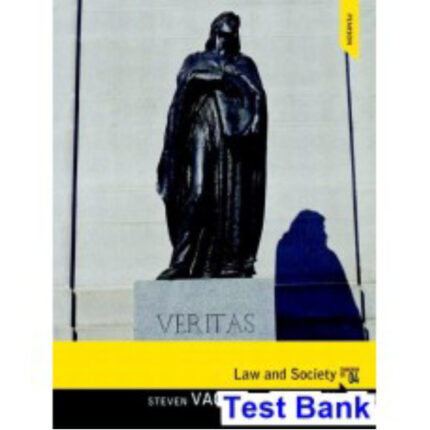Chapter 11: Motivation and Perceptions of Self
MULTIPLE CHOICE
1. A behavioral psychologist would be most likely to recommend which of the following motivational techniques?
a. Present a provocative topic for discussion.
b. Give students bonus points when they complete an assignment.
c. Set up learning centers in the classroom.
d. Permit students to choose their own topics of study.
ANS: B REF: 368-369
NOT: The behavioral view of motivation stresses that organisms are most likely to do something when they are reinforced for performing a type of behavior.
2. Giving students good listener certificates would be consistent with which of the following views of motivation?
a. behavioral c. humanistic
b. cognitive d. social learning
ANS: A REF: 368-369
NOT: The behavioral view of motivation stresses that pupils learn when they are reinforced for displaying the desired behavior. A good listener certificate functions as a reward for being a good listener.
3. Ian’s parents have noted that he studies longer and gets better grades when they and the teacher praise his efforts and accomplishments than when they simply acknowledge his good performance. This pattern suggests that Ian is motivated primarily by
a. intrinsic motivation. c. a task mastery orientation.
b. extrinsic motivation. d. growth needs.
ANS: B REF: 369
NOT: Extrinsic motivation means that individuals exhibit desired behavior in order to gain an external reward. Ian’s behavior clearly indicates that he is extrinsically motivated.
4. Demetria says to her teacher, “You know what? I bet I have fifty mystery books at home, and I love reading them over and over again. Each time I read them, I catch some clue that I missed before. If I had more time, I bet I could read a new book every night! Wouldn’t that be cool?” According to motivational theories, Demetria continues to read her books primarily because
a. of high intrinsic motivation. c. her mother will buy her more books.
b. it enhances her self-concept. d. she enjoys the approval of her teacher.
ANS: A REF: 369
NOT: Intrinsic motivation occurs when the student performs some task in order to experience inherently pleasing results.
5. An excessive use of rewards may lead to
a. the enhanced likelihood of general transfer.
b. the development of materialistic attitudes.
c. greater freedom on the part of students.
d. a form of intrinsic motivation.
ANS: B REF: 369
NOT: Research suggests that an excessive use of rewards can lead to materialistic attitudes, decreased intrinsic motivation, and temporary behavior change.
6. A teacher who wanted to use external rewards with students who were already highly interested in a topic would
a. provide students with positive feedback about their performance.
b. provide no rewards to students.
c. provide rewards only to the top 15 percent of students.
d. give large rewards to students for attempting to complete difficult tasks.
ANS: A REF: 369
NOT: One condition under which the use of extrinsic rewards enhances intrinsic motivation is when the teacher provides positive feedback to students about their progress in meeting a predetermined standard of excellence.
7. Which of the following most clearly illustrates extrinsic motivation?
a. an assignment worth ten bonus points
b. an optional assignment
c. a class discussion on a topic of your choice
d. a paper to be written about a personal experience.
ANS: A REF: 369
NOT: Extrinsic motivation involves doing something, not for its own sake, but for a reward.
8. Which of the following statements by a student best illustrates a possible result of excessive extrinsic motivation stressed in the text?
a. “Now that I’ve finished reading this assigned book, I think I’ll look for other books on the subject.”
b. “Now that I’ve passed the course, I can hardly wait to sell the textbook.”
c. “I really liked this course, and even though I didn’t get an A in it, I think I’ll take an advanced course in the same subject.”
d. “I thought this course was hard work but I can apply what I learned outside of the classroom.”
ANS: B REF: 369
NOT: When extrinsic motivation is used too much and for too long, students may become resentful and view learning as a means to an end earning a reward. As a result, when they receive the reward, they assume that the whole purpose of the task has been achieved.
9. A teacher who wanted to use external rewards to enhance intrinsic motivation would
a. give large rewards to students for attempting to complete difficult tasks.
b. provide rewards to all students who achieve a predetermined standard of excellence.
c. provide rewards only to the top 15 percent of students.
d. allow students to determine the standard of excellence.
ANS: B REF: 369
NOT: One condition under which the use of extrinsic rewards enhances intrinsic motivation is when the reward is available to all students who meet a predetermined standard of excellence.
10. Research suggests that intrinsic motivation can be undermined when
a. all students who meet a particular standard are awarded the top grade.
b. teachers award the top grades only to a small percentage of students who have outscored their classmates.
c. teachers rather than students set the standard for excellence.
d. students are praised for doing well on a subject in which they are already strongly interested.
ANS: B REF: 369-370
NOT: Intrinsic motivation can be undermined when students have to compete for a limited supply of grades, as when teachers use norm-referenced grading (more popularly known as grading on the curve).













Reviews
There are no reviews yet.